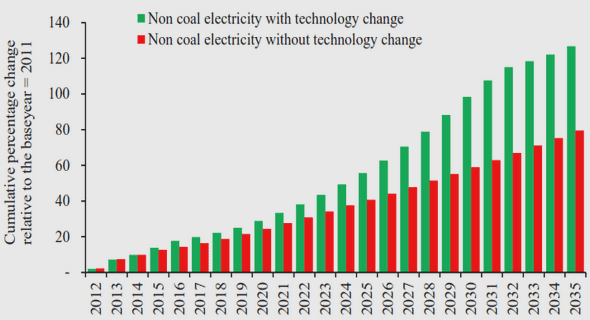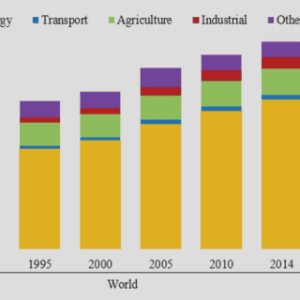(Downloads - 0)
For more info about our services contact : help@bestpfe.com
Table of contents
Chapter 1: Introduction
I. Presentation of the technology
1. Introduction to the FD-SOI technology
2. MOSFET in the 28 nm UTBB FD-SOI technology
II. The electrostatic discharge
1. Definition of ESD and importance of ESD protections
2. ESD stress standards
a. Human Body Model
b. Machine Model
c. Charged Device Model
3. ESD design window
4. Protection strategies
a. Local protection strategy
b. Remote protection strategy
c. Distributed protection strategy
III. Context of study and tooling
1. Measurements
a. TLP measurements
b. VF-TLP measurements
c. DC measurements
2. TCAD as a predictive tool of investigation
a. Setup of the TCAD simulations
b. Average Current Slope and Average Voltage Slope
IV. ESD Protection devices
1. Diode
2. Protection devices built from NMOS devices
Outline
a. MOS switch
b. Grounded Gate NMOS
c. Bipolar MOS
3. Protection devices built from the SCR
a. Silicon Controlled Rectifier
b. Zero subthreshold swing and Zero impact ionization FET
c. Gated Diode NMOS
d. Beta-Matrix architecture
V. Objectives
Chapter 2: ESD thin film devices
I. ESD boost solution for MOSFET and BIMOS
1. Context
2. Analysis
II. GDxMOS device for high and low-voltage ESD protection
1. GDxMOS as a high voltage protection
a. ESD robustness measurements
b. Influence of the front gates on the GDNMOS
c. Comparison between GDNMOS and GDBIMOS
d. Influence of the back gate on the GDBIMOS
e. Drain connectivities
2. GDxMOS as a low-voltage protection
a. Low-doped drain GDNMOS
b. Low-doped drain GDBIMOS
3. Silicide management in the GDxMOS
a. Silicide removal
b. Partial silicide
c. Partial silicide and drain connected to the diode gate
d. Partial silicide and drain connected to the anode
e. Fragmented partial silicide
Chapter 3: BIMOS matrices
I. BIMOS dot topology
1. 1D BIMOS dot
2. Matrix of BIMOS dot
II. Comparison of different BIMOS devices
Outline
1. Devices description
2. Results and discussion
Chapter 4: 3D ESD protections in FD-SOI
I. FD-SOI silicon continuity with bulk
II. 3D BIMOS merged SCR with silicon continuity
1. BIMOS merged SCR using P-doped trigger
2. BIMOS merged SCR using N-doped trigger
III. In-situ coupled bias resistance
1. In-situ coupled bias resistance in thin silicon film
2. In-situ coupled bias resistance in hybrid bulk
General conclusions
Appendix 1: TCAD setup
Appendix 2: AVS behavior of the BIMOS
Appendix 3: Résumé étendu en français
Chapitre 1 : Introduction
I. Contexte et objectifs
II. Présentation du MOSFET en technologie FD-SOI
III. Les décharges électrostatiques
1. Définition des ESD et importance des protections
2. Stress ESD standards
3. La fenêtre de conception ESD
4. Les stratégies de protection
IV. Outils de caractérisation
1. Mesures DC, TLP et VF-TLP
2. Outil TCAD : les simulations ACS et AVS
V. Les composants de protection contre les ESD
1. Diode de protection
2. Protections à base de NMOS
3. Protections à base de SCR
Chapitre 2 : Protections ESD dans le film mince
I. Boost capacitif pour NMOS et BIMOS
Outline
II. Le GDxMOS, protection ESD pour haute et basse tension
1. Le GDxMOS en tant que protection haute tension
2. Le GDxMOS en tant que protection très basse tension
3. Gestion du siliciure dans le GDxMOS
Chapitre 3 : Matrices de BIMOS
I. La topologie BIMOS dot
1. BIMOS dot en 1D
2. Matrice de BIMOS dot
II. Comparaison de différents BIMOS
Chapitre 4 : Protections ESD 3D en technologie FD-SOI avec continuité de silicium
I. BIMOS fusionné avec un SCR en 3D
II. Résistance fusionnée
1. Résistance fusionnée dans le film mince
2. Résistance fusionnée dans le substrat
Conclusions générales
References
Abstract




